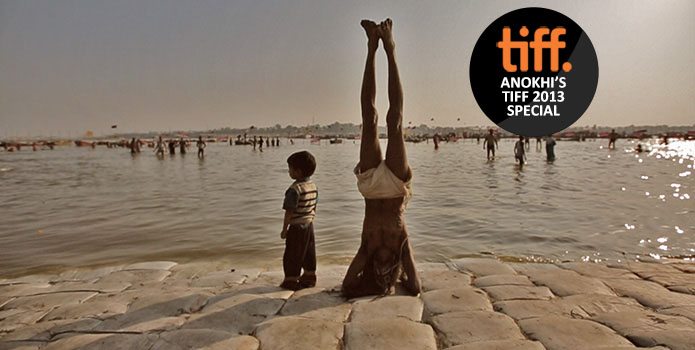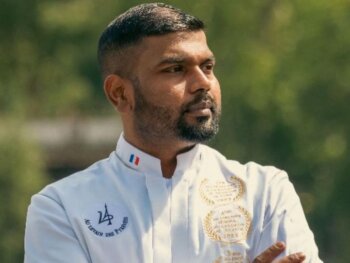Pan Nalin made an auspicious debut with 2001’s Samsara, a visually arresting drama about one monk’s spiritual journey. He arrived at TIFF 2013 with a film that explores much in the same territory, albeit in an entirely different genre; his new documentary, Faith Connections. It finds the Indian-born helmer delving into the Kumbh Mela, a Hindu pilgrimage that takes place every three years and sees over 100 million people make the trek to plunge themselves into the waters of a sacred river.
Nalin turns his camera on a select few attendees, revealing both their distinct personal stories and the common thread running through each.
At TIFF, the director and I sat down to talk about faith in the 21st Century and how he managed to find a handful of intriguing stories amidst the millions.

As an artist, what drew you to the Kumbh Mela?
Of course, the statistics always impressed me, how people come from all around the world. And this year, when the Kumbh Mela dates were announced, my father had told me that I should fetch him a bottle of holy water. So I said, yeah, maybe that’s a good excuse [to check it out].
I spoke with my Indian producer and he said, “Oh, that’s a good idea; you should do your own vision.” I said, “Yeah, but there are so many films about the Kumbh Mela. So if I don’t feel it, I’ll come back. But if I find something, I’ll do a film.”
And what did you find?
Mainly it was because of the people, because I realized that if I find them emotionally touching, they would move the [audience]. We were very curious and intrigued by these characters.
And we realized that if you could capture that, the Kumbh Mela would be the backdrop; it’s the [people] that will carry the vehicle…they just got more and more interesting as we were working…We didn’t know what we would be making the film about, but it was a gut feeling.
How did you go about tracking down your “stars”?
It started broadly as curiosity. We were on the street and we see this Yogi Baba and all the people are watching him.
And I said, ‘The moment we put that in, people will say, ‘Oh, it’s cliché.’ But [then], I see him coming with a milk bottle for a baby. A few minutes later, there’s a baby in his lap and we start shooting without knowing the story…What is [a baby] doing with a sadhu, you know?
So we followed that, and suddenly the cliché is broken…It’s becoming rare in India to find genuine holy men, as it’s becoming a business, so I was very touched by his humility.
He had worked so hard for many years to achieve his penance…and he is willing to abandon all that to look after an abandoned baby, getting back into the society, which is such a sacrifice. That really warmed me.
Did you find a common link between your subjects?
They all had this idea of devotion, that there is a bigger energy working somewhere, which was really interesting because, especially in the 21st century, what is the role of faith?
What is humanity if you take away our faith? And it might not be the religious kind; some young people, they focus that faith, oddly, in being a fan of Lady Gaga [laughs.]
It’s the same sort of emotion, when you see their faces and the screaming. I sense the same thing at the Kumbh Mela; people who take a holy dip come out, and their face is like yesterday here, some fans looking at Keira Knightley.
It could be hero-worshipping, it could be god-worshipping, [we are] all connected by some kind of faith.
Did being a part of this experience impact your own spirituality?
Just being there in this ocean of humanity is a feeling so hard to express, because something happens there… it truly is an uplifting spirit.
We had gone to the hospitals trying to find some stories… and the doctors told me, ‘Go to the Harvard camp… just like the sadhus, Harvard University set up a camp, and all the students are here, 400 of them.”
They were doing all scientific study [on the Kumbh Mela]. And they were all astonished; these were the students who grew up with Facebook, a really young generation, and they felt it [spiritual connection] as well.
They felt, ‘Oh my God, how will I go back to my dormitory or my classroom; this has been so intense.’ People were rethinking their PhD. They are not religious, but something sort of clicked.
Image and Video Courtesy:tiff.net
Matthew Currie
Author
A long-standing entertainment journalist, Currie is a graduate of the Professional Writing program at Toronto’s York University. He has spent the past number of years working as a freelancer for ANOKHI and for diverse publications such as Sharp, TV Week, CAA’s Westworld and BC Business. Currie ...














































































































